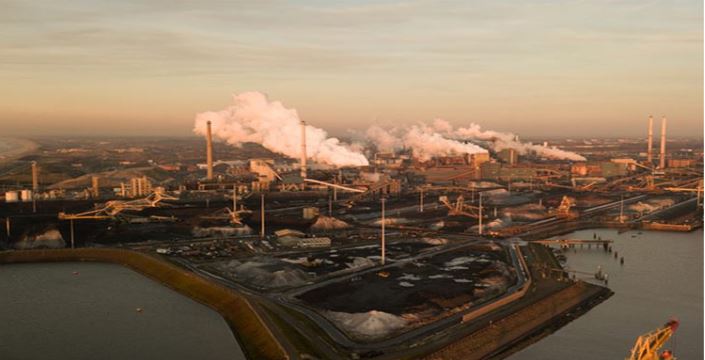
KYIV: Russia‘s invasion of Ukraine has directly caused or paved the way to the emission of 175 million tonnes of carbon dioxide (CO2) into the atmosphere, a joint report said on Thursday.
The report, published by Ukraine’s environment ministry and climate NGOs, said their estimate included both emissions that had been released and those that would be produced during repair work following the destruction caused by the February 2022 invasion.
It laid out some of the main carbon-emitting activities caused by fighting.
“Billions of litres of fuel used by military vehicles, nearly a million hectares of fields and forests set ablaze, hundreds of oil and gas structures blown up and vast amounts of steel and cement used to fortify hundreds of miles of front lines,” it said.
The 175 million tonnes estimate was the equivalent to the annual emissions produced by 90 million cars, or the whole of the Netherlands in a year, it said.
The war launched by Moscow has killed tens of thousands and displaced millions, but it has also caused vast environmental damage as two armies engage in the biggest European land war in 80 years.
The report, which seeks to quantify the war’s carbon footprint, was put together in cooperation by Ukraine’s environment ministry and climate researchers from Ukraine and other countries.
The report used a measure called the Social Cost of Carbon to calculate the approximate financial cost of the additional emissions.
“The total climate damage that the Russian Federation has caused after 24 months of the war amounts to more than USD 32 billion,” it said.
The report said that the war emissions could be divided approximately into three thirds: military activity, the steel and concrete needed to rebuild damaged infrastructure, and the final third being made up of several disparate factors including fires and movement of people.
“In the early months of the war, the majority of the emissions were caused by the large scale destruction of civilian infrastructure requiring a large post-war reconstruction effort,” the report said.
“Now, after two years of war, the largest share of emissions originate from a combination of warfare, landscape fires and the damage to energy infrastructure.”
Military activity was responsible for 51.6 million tons of CO2 equivalent emmmisions, the report said.
The majority of that number, 35.2 million tons of CO2 equivalent, was caused by the Russian military’s fuel consumption, with a further 9.4 million tons from the Ukrainian military’s use of fuel.
Among the world’s biggest consumers of fuel, militaries worldwide account for 5.5% of global greenhouse gas emissions, according to a 2022 estimate, opens new tab by international experts.
According to the report, the war has significantly increased the frequency of landscape fires in the affected areas.
It said a million hectares of land had been scorched by 27,000 war-related fires, causing the equivalent atmospheric damage of 23 million tons of CO2.
The report also calculated that the closure of airspace over Ukraine and some parts of Russia, as well as the restrictions on certain carriers’ use of Russia’s airspace, have created just over 24 million tons of CO2 of additional emissions. AP
Please visit our website London Institute of Peace Research for latest peace news


